Affiliate disclosure: This post may contain affiliate links. Please see our Privacy Policy.
Cayenne salve is used for topical pain relief for muscle and joint pain, and you can make it with simple ingredients right in your kitchen!
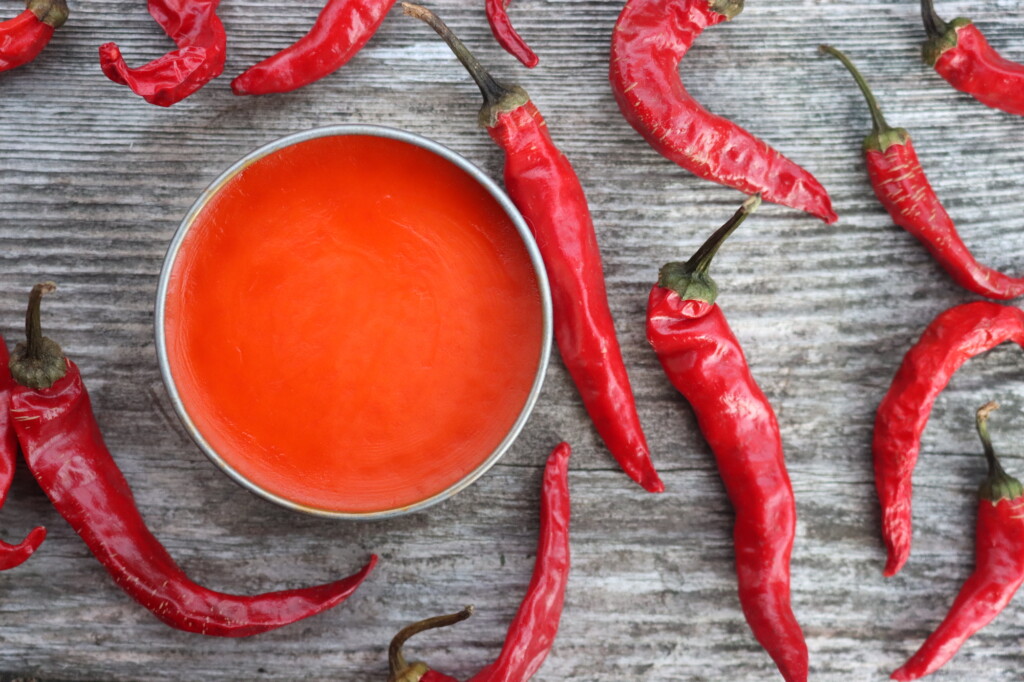
Cayenne (Capsicum annuum) contains high levels of capsaicin, which creates the heat or burning sensation you get from hot peppers. I love growing cayenne peppers to create my own hot sauce (especially fermented hot sauce, which brings out more flavor complexity) and to dry as a spice. But cayenne is more than just a spice!
It may seem counterintuitive, but medicinally, capsaicin acts as an analgesic or pain reliever. It may also have anti-inflammatory properties. Topically, it creates a warming sensation, similar to other muscle rubs. I love using it on sore knees, feet, and shoulders after hiking or working in the garden.
If you want some cayenne salve but aren’t into DIY projects, you can purchase some. Cayenne salve isn’t commonly available at most stores, but small herbalists on Etsy often carry it.
On the other hand, if you’re ready to dive in further, you can grow and dry your own cayenne peppers. One of my favorite Vermont seed companies, High Mowing Seeds, carries a couple of cayenne varieties, as does Seed Savers Exchange.
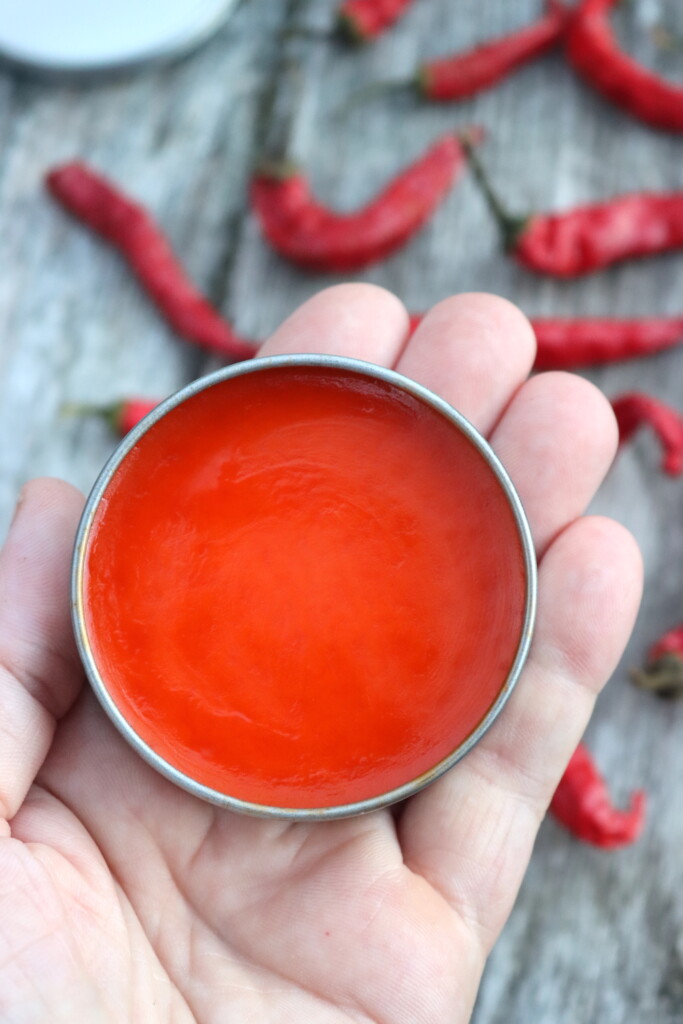
(Cayenne is a common spice, but I still recommend checking with a clinical herbalist or physician before trying a new herbal remedy. There’s always the possibility of allergic reactions, interactions with other supplements and medications, or unexpected side effects. The following information is based on my research and personal experience. I don’t have any certifications that would allow me to make suggestions for your health. When using herbal medicine, do plenty of research, check with multiple reputable sources, and use your best judgment.)
Benefits of Cayenne Salve
Native Americans have been cultivating and using cayenne peppers for food and medicine for at least 9,000 years. Cayenne has a number of impressive internal benefits, from improving circulation to relieving abdominal cramps. When we use cayenne externally, we primarily benefit from its analgesic and anti-inflammatory properties.
Like calendula salve and jewelweed salve, cayenne salve can help treat the pain and inflammation related to chronic skin conditions like psoriasis. However, it is even better at alleviating pain and swelling from internal conditions like rheumatoid arthritis, osteoarthritis, menstrual cramps, arthritis, and neuralgias, including diabetic neuropathy and shingles.
Modern studies have found that even 0.025% to 0.075% capsaicin (the medicinal compound in cayenne) in an ointment can provide short-term pain relief. One study also looked at an 8% concentration of capsaicin in patches. The study indicated that a single 60-minute application could provide patients relief from neuropathic pain for up to 12 weeks.
A crucial part of cayenne’s pain-relieving properties is capsaicin’s ability to block a neurotransmitter called Substance P (SP). Capsaicin decreases the amount of SP found at peripheral nerve endings. As SP plays a critical role in pain transmission, capsaicin effectively decreases the awareness of pain.
While I haven’t used cayenne salve for treating chronic conditions like rheumatoid arthritis, I have found it effective for everyday joint and muscle pain that comes with all the hiking and gardening I get into each summer. It’s a great alternative to ibuprofen for alleviating pain and swelling at home.
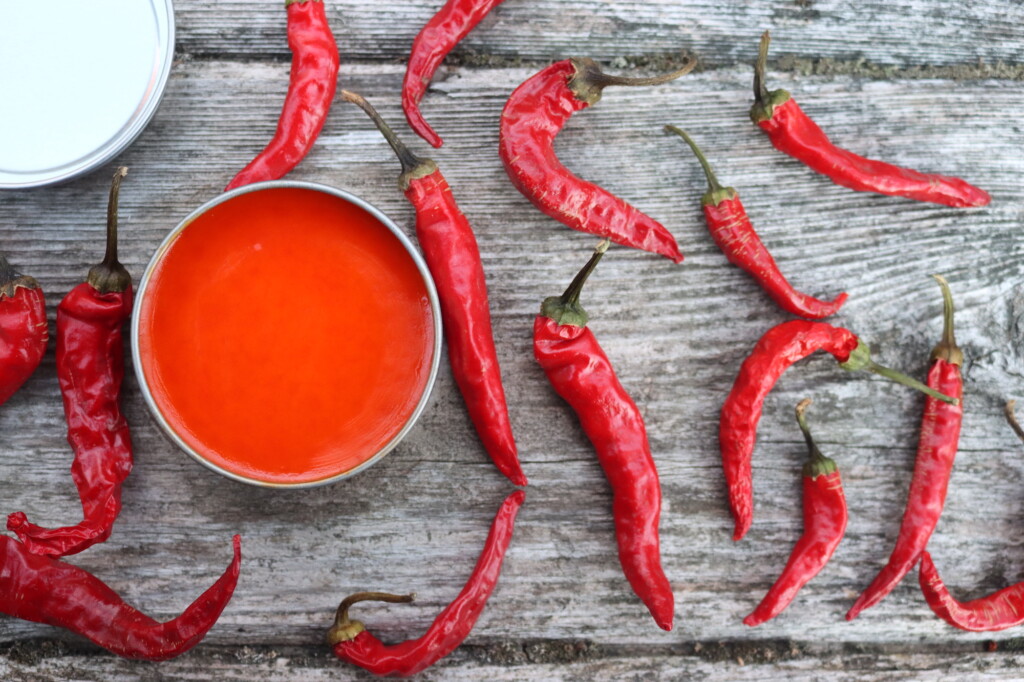
Supplies and Equipment
Herbal medicine can seem a bit complex and overwhelming, but cayenne salve is an excellent project for newcomers. Cayenne is readily available and easy to process into an effective salve with just a few basic supplies and ingredients.
We need a double boiler to gently heat some ingredients. There are many affordable options like these, but as I like to keep my kitchen as simple as possible, I just set up a DIY double boiler. All you really need is a small pot and a heat-proof container like a mason jar.
The base of this salve is made from neutral oil. Typically, I use olive oil because it’s easy to find and I generally have some on hand for cooking. If you don’t like using olive oil, opt for another neutral oil that’s good for the skin, like jojoba, coconut, grapeseed, or almond oil.
We also need beeswax to thicken our salve. I don’t keep bees, and I usually order beeswax pellets because I find them easy to measure and use. However, you can also use wax from your own hive or purchase beeswax in a large block if that works better for you.
For this recipe, I measure the beeswax by weight. A small kitchen scale has become a must-have while working with herbal recipes. Thankfully, they’re generally quite affordable. If you don’t want to purchase a scale, you can buy pre-weighed ingredients like these 1 oz beeswax bars.
(If you want, you can also make the salve vegan, in that case, you’d just substitute cayenne infused oil in this vegan herbal salve recipe. That’s only if you’re avoiding beeswax, as the rest of the salve is naturally vegan, of course.)
When you’re salve is finished, you’ll also need something to store it in. You could use one large container, but I like to divide my salve into smaller containers like these 2 oz tins. A little salve goes a long way, and these durable, small containers are great for travel and for gifts. I recommend sticking to glass or metal, as the salve will be hot when we pour it into the containers. An alternative to metal tins is 1/4 pint mason jars. They’re a good size, make pretty gifts, and are easy to reuse.
How to Make Cayenne Salve
Making cayenne salve is simple, and it’s not all that different from any other herbal salve recipe. You’ll need about 30 minutes to process and prepare ingredients, but the rest is hands-off. When working with dried cayenne, I typically use a cold infusion. While it’s slow, taking three to six weeks, it’s simple and completely hands-off.
However, when working with fresh herbs, I always use the warm, rapid infusion method, heating the oil to speed up the infusion. This is critical to prevent fresh herbs from going rancid. Since cayenne dries so readily, it’s much easier to work with dried and not have to worry about rancidity or spoilage that comes with making herbal salves with fresh herbs.
To make this salve, I use dried cayenne powder. If you purchased cayenne powder at the store, you’re all ready to go. If you are growing your own cayenne peppers, wait until the peppers are fully ripe and red to harvest them. Then, you can string them to dry or, for faster results, slice them and dry them using a dehydrator. Once completely dry, you can blend or crush your cayenne peppers into a powder.
Even if you like hot food, getting cayenne pepper on sensitive spots like your eyes can be extremely irritating. Wear gloves and glasses when slicing fresh cayennes, and avoid touching anything with your peppery gloves.
To begin, add about six tablespoons of cayenne powder to a one-pint mason jar. Then, fill the jar with olive oil or the neutral oil of your choice, leaving some head space. Stir the powder into the oil.
Seal your jay of cayenne and oil, and set it somewhere out of direct sunlight. Depending on the temperature, it will take three to six weeks to infuse.
(If you don’t want to wait on a cold infusion you can experiment with other oil infusion methods.)
After three to six weeks, your oil will be infused with cayenne and its helpful compound, capsaicin! When you’re satisfied with your infusion, it’s time to strain out as much of the cayenne powder as possible. To do this, you’ll need a strainer, gloves, cheesecloth, or other filtering material.
Strain the oil into a clean jar. It will filter slowly and towards the end, use your gloved hands to squeeze as much oil out of the filter and cayenne powder as possible.
Then, take your filtered cayenne oil and set it up to heat again in a double boiler, with about 1 inch of water in the base. Bring the water in the double boiler to a simmer. Then, add your beeswax to the oil, stirring constantly, until it’s smooth.
If you haven’t picked up a kitchen scale and are working with beeswax pellets, you can make a rough estimate. One heaping tablespoon of beeswax pellets is roughly equivalent to one solid ounce of beeswax.
When your beeswax and oil are completely blended, turn off the heat and pour your finished salve into containers or tins. Let your salve stand for 30 minutes before using. The salve is shelf-stable. After about one year, it may begin to lose potency. Ideally, you want to make fresh salves each year, but extra salve is still safe to use up.

Cayenne Salve
Ingredients
- 4 Tbsp Cayenne Powder or about 1 cup dried cayenne peppers, chopped
- 1 1/4 to 1 1/2 cups of olive oil or any other neutral oil
- 1 ounce of beeswax
Instructions
- Purchase dried cayenne powder or process, dry, blend, or grind your own cayenne peppers. Add the powder to a one-pint clean mason jar.
- Cover the cayenne powder with olive oil (or the neutral oil of your choice), stirring it in well.
- Seal your jar and leave it out of direct sunlight to slowly infuse for the next three to six weeks.
- Once you’re happy with the infused oil, strain out the cayenne powder using a strainer and cheesecloth or other filter material. Carefully squeeze as much oil as possible from the filter and cayenne powder while wearing gloves.
- Add the infused oil to a clean jar and heat it in the double boiler again until the water is simmering.
- Stir the beeswax into the oil until it’s well-blended, then turn off the heat.
- Pour the finished cayenne salve into tins or jars.
- Leave the salve to cool and set up for at least 30 minutes before using.
Notes
Cayenne is a hot pepper cultivar. Most folks grow it to use as a spice rather than as a vegetable. It’s excellent for drying and fermenting. Cayenne can be quite spicy, so I recommend wearing glasses and gloves if you’re about to process fresh cayenne.
You’ll need a garden bed with well-drained, fertile soil that receives full sun to grow cayennes.
Cayenne peppers are easy to grow from seed or transplant. Depending on the variety, the plants grow from 18 to 24 inches tall and form 5 to 6-inch long, tapered, slightly curved peppers that ripen to red. Depending on the variety, you can harvest cayennes in as little as 70 days.
If you don’t grow cayenne peppers, you can easily order dried peppers online or find cayenne powder at most grocery stores.
Aside from its culinary uses, cayenne is a potent medicinal herb for topical and internal applications. Herbalists consider it an anti-inflammatory. You can take the powder in capsules or add fresh cayenne peppers to recipes like fire cider. Externally, it has anti-inflammatory and analgesic properties, making it a good choice for relieving salves and muscle rubs like the one we’re about to make.
Cayenne salve is most commonly used for natural pain relief. The capsaicin in cayenne pepper helps block pain signals and improve circulation, making it helpful for sore muscles, stiff joints, arthritis, back pain, and even nerve pain in some cases. It’s also warming, which can feel especially nice in cold weather or for chronic aches.
It might cause a warming or tingling sensation—especially if you’re sensitive to capsaicin. Most people find it mild and soothing, but it’s always smart to test a small patch first. Avoid applying it to broken skin, and be sure to wash your hands thoroughly after use (or wear gloves when applying). And obviously, avoid touching your eyes, nose or private areas with the salve.
You can use it a few times a day, as needed. Many people find it helpful to apply in the morning for stiffness or before bed to ease nighttime pain. If you experience any skin irritation, discontinue use or try a milder batch with less cayenne.
No, cayenne salve is not recommended for young children or animals. The active compounds are strong and can cause discomfort or accidental contact with eyes and mucous membranes. Always store it safely out of reach.
If stored in a cool, dark place in a clean container, cayenne salve can last about 6–12 months. Using a carrier oil with a long shelf life, like olive oil, helps it stay fresh longer. Adding a bit of vitamin E can also help prevent rancidity.
Absolutely! Ginger, turmeric, arnica, or St. John’s wort are popular additions for enhanced pain relief. Just be sure any herbs you include are properly infused into the oil and safe for topical use.
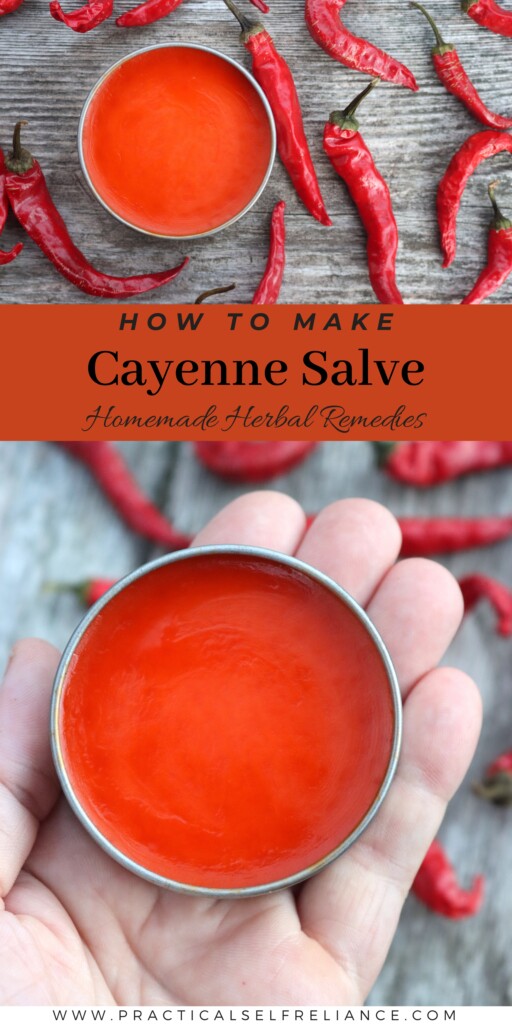
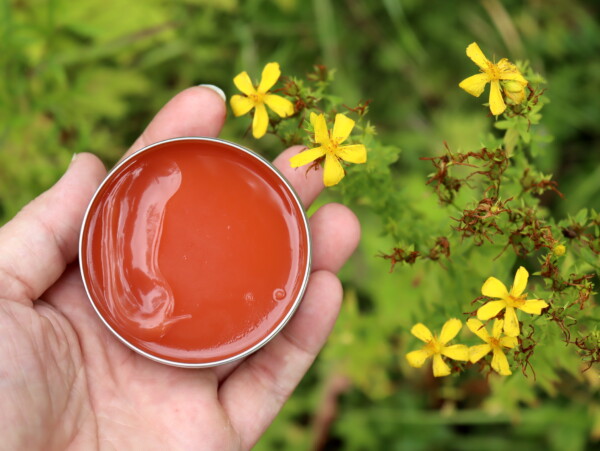
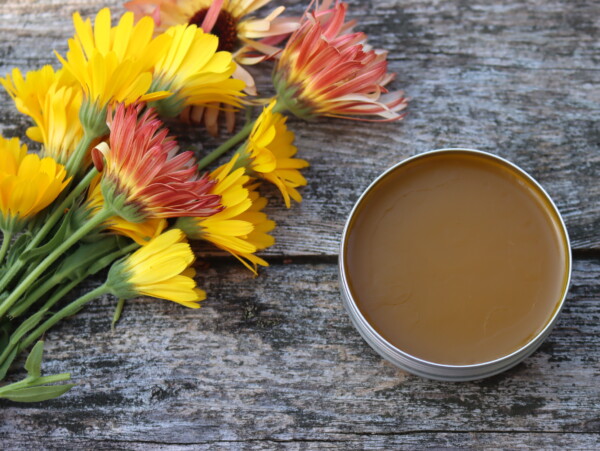
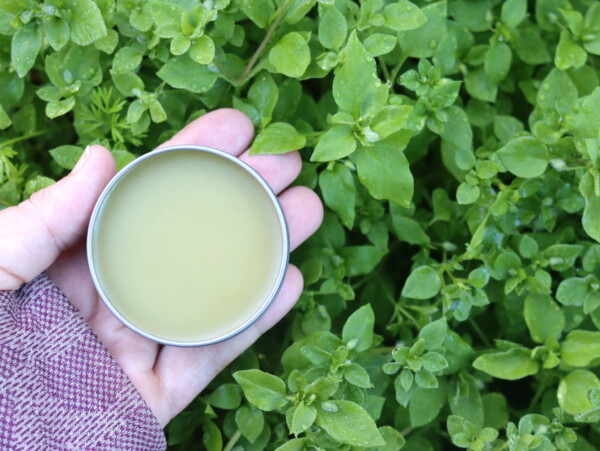
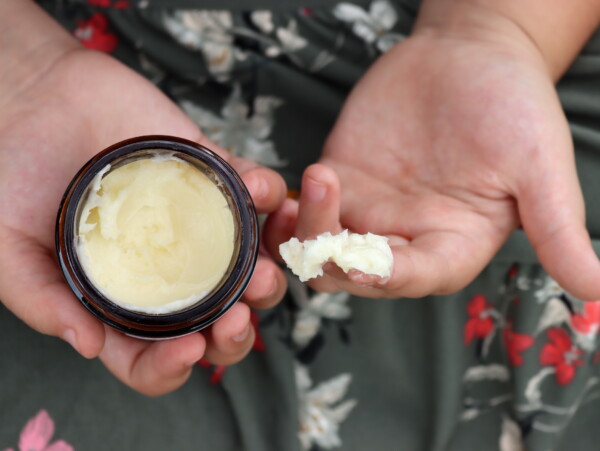
Thank you so much for posting this! I had an herbalist friend many years ago who would make this for me as I had trouble with my hands and numbness and tingling after sleeping. I haven’t been able to find it in years. Now I can make my own! 🙂
love & blessings
~*~
Wonderful!